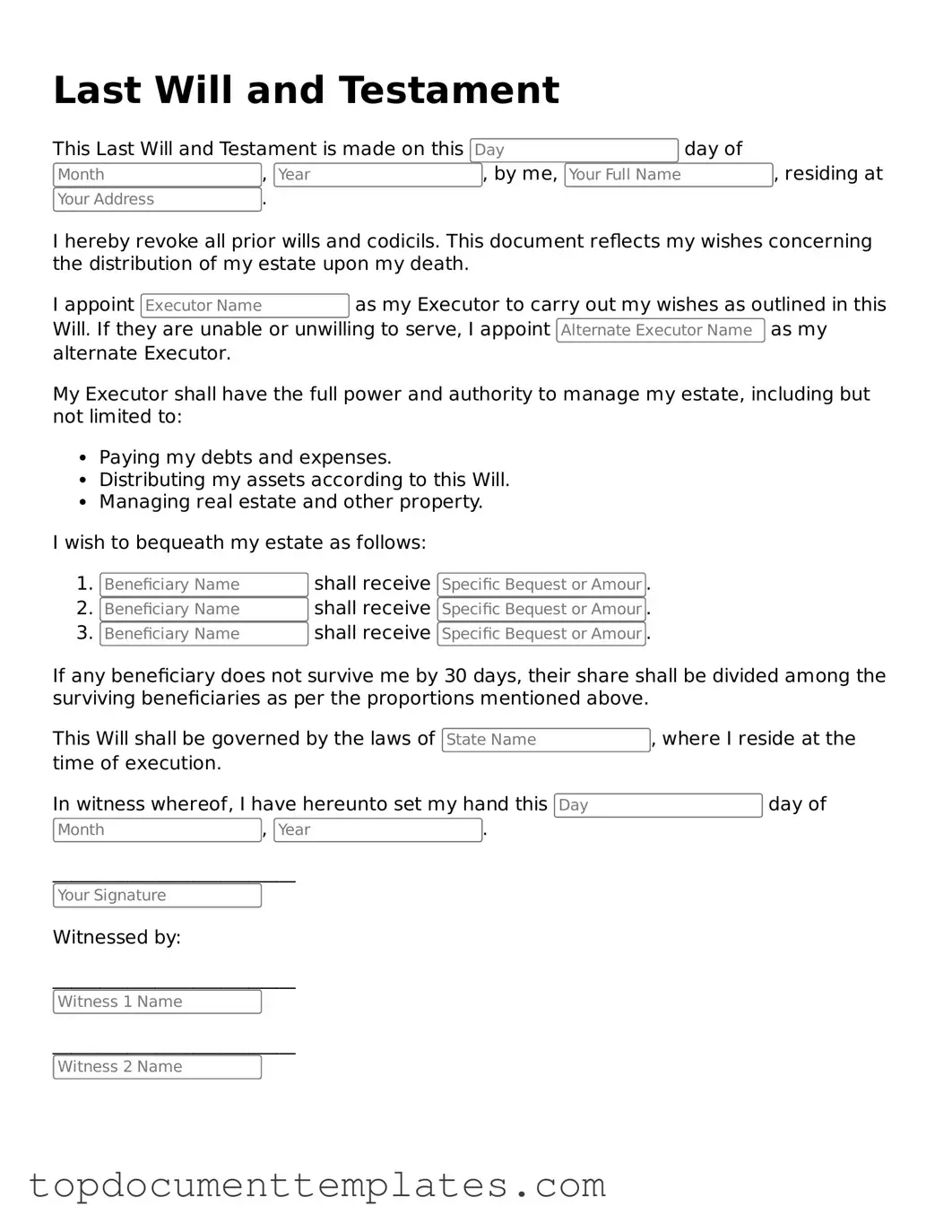Official Last Will and Testament Template
A Last Will and Testament is a legal document that outlines an individual’s wishes regarding the distribution of their assets and the care of any dependents after their passing. This essential form ensures that a person's intentions are honored, providing clarity and direction for loved ones during a difficult time. To take the first step in securing your legacy, consider filling out the form by clicking the button below.
Open This Form
